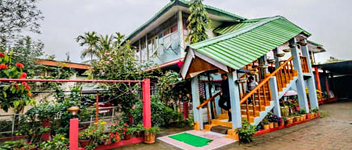Home
> Flora In Kaziranga
Flora in Kaziranga National Park
Streched ober an area of 378 Square Kilometers, Kaziranga Nationall Park is one of the most beautiful national park with good number of wild animals as well as birds. It is nestled on the bank of Brahmaputra river, the river which is known to be feeding the ecosystem of the area, thereby benefitting the wild life. It is being marked as "Hot Spot of Biodiversity" in India because of being hub to hundreds of birds and animals.
Vegetation in Kaziranga National Park
Kaziranga National Park is majorly covered with four distinct types of vegetation keeping it stand apart from the other national parks of the country. Have a look at the cheif our vegetations in kaziranga-
- Alluvial savanna woodlands,
- Alluvial inundated grasslands,
- Tropical moist mixed deciduous forests,
- Tropical semi-evergreen forests.
The reason of distinct types of flora can be attributed to the diversity between the height above sea level of the western and eastern region. The Kaziranga forest is spread on the landform of 378sq km. The western area of the national park is situated at the lower altitude and has grasslands.
- Tall grasses like sugarcanes, elephant grass and spear grass are found in the western zones. Whereas small grasses too can be seen here and there in park. You can see small grasses mostly around cotton tree, Kumbhi, Indian gooseberry and elephant apple.
- The round the year green Kaziranga Park every year faces the issues like flood and it probably the reason for greens, herbivores animals mostly do the grazing job.
- In addition to above vegetation and the reasons of its green beauty, Kaziranga national park is over boarded with some of the most enticing types of flowers like water lilies, water hyacinth, lotus and water hyacinth contributing to the formation of amazing and breathtaking beauty of the park.
- You may also see aquatic flora in the region in the Brahmaputra River and other water bodies of the region. Water hyacinth is commonly found aquatic plant; they however get damaged due to flood. The ponds created by flood are the root cause of short grasses found mostly around the ponds.
In 1986, flora of the region was studied. Have a look at the diverse vegetation coverage in dense and large Kaziranga, which is classified as follows:
- 41% of the total vegetation is covered with Tall Thickets of Elephant Tall Grasses
- 29% Open Jungle
- 11% Short Grasses
- 8% of the area is covered with rivers and water bodies
- 06% Sand and
- Rest 4% is Swamplands
Kaziranga was announced as the National Park in 1974 and is now the resource of extraordinary flora and fauna, which every year attracts millions of bird watchers, wild life enthusiasts and admirers of lust green scenic beauty from almost every part of the world.



